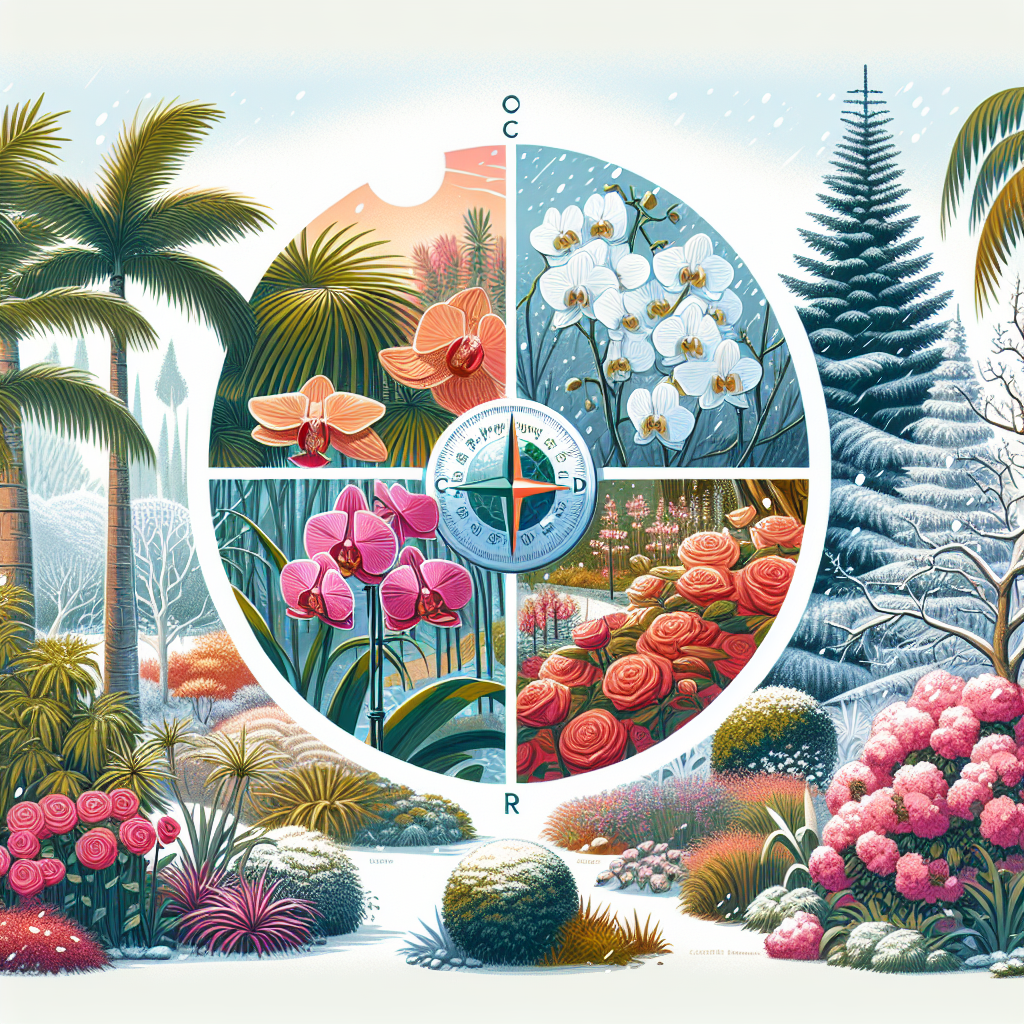Choosing the Right Outdoor Plants For Your Climate
When it comes to gardening, one truth is universal: not every plant thrives in every climate. Understanding your garden’s unique conditions is crucial to cultivating a vibrant and healthy outdoor space. This blog post will provide you with a roadmap to selecting the right outdoor plants that are not only suited to your climate but will also flourish in your backyard oasis.
Know Your Zone
The United States Department of Agriculture (USDA) Plant Hardiness Zone Map is an invaluable resource for gardeners. This tool helps you discover which plants are most likely to thrive at your location. Check your zone before you begin your plant selection process (USDA Zone Finder).
Consider the Microclimate
Your backyard may have its own microclimate, influenced by factors such as local bodies of water, urban structures, and even the position of your garden in relation to your home. It’s not just about the zone – it’s the unique environmental conditions that play a significant role in plant survival and growth.
Annuals vs. Perennials
Annual plants complete their life cycle in one growing season, while perennials last for more than two years. Annuals, like marigolds or petunias, offer bright, season-long color but need to be replanted each year. Perennials, such as hostas or daylilies, might not be as flashy but provide consistent structure and recurring beauty to your garden.
Sunlight and Shade: A Balancing Act
Plants come with specific instructions regarding their sun and shade requirements. Full sun plants require at least 6 to 8 hours of direct sunlight each day, whereas shade plants can become scorched if exposed to the same intensity. Use the sunlight in your garden to guide your plant choices (Sunlight Requirements for Plants).
Water Wise
Drought-tolerant plants are becoming increasingly popular as water conservation is more important than ever. Succulents and other drought-resistant plants can survive in arid conditions and are perfect for hot and dry climates. Check out The Drought-Defying California Garden for inspiration on water-wise gardening (Purchase Link).
Soil Savvy
Soil quality can vary greatly within the same climate zone. Soil tests can help you determine the pH level and nutrient composition of your soil, allowing for better-informed decisions when it comes to plant selection and soil amendments.
Tailor-Made Plant Choices for Various Climates
Cold Climates and Frost Concerns
In regions with harsh winters, opt for hardy perennials like coneflowers, peonies, and ornamental grasses that can survive frigid temperatures. Always check your plant’s hardiness zone rating, and consider planting varieties known for their resilience.
Temperate Pleasures
If you’re in a moderate climate, you have a broad range of plant options. Many fruit trees, like apple or pear, enjoy these conditions, as do flowering shrubs like hydrangeas and camellias.
Warm and Humid Havens
For those in warmer, more humid climates, tropical plants like hibiscus, canna lilies, and palm trees can create lush, paradise-like gardens. Remember to provide ample water and high-potassium fertilizer to support their growth.
Arid and Intense Sunlight
Desert dwellers should lean towards cacti, agave, and other desert natives that thrive under the intense sun and require minimal water. Incorporate local rocks and sands to your garden design for a cohesive desert aesthetic.
Popular Plants for Every Climate
To help you start your plant selection, here’s a list of popular plants categorized by climate suitability:
Cold Climates
- Siberian Iris
- Snowdrops
- Juniper
Temperate Climates
- Japanese Maple
- Rhododendrons
- Forsythia
Warm and Humid Climates
- Bougainvillea
- Crepe Myrtle
- Ferns
Arid Climates
- Yucca
- Sedum
- Lavender
Enhance Your Gardening Knowledge
Don’t stop at plant selection; continue your gardening education to understand how to properly care for your plants. Utilize authoritative sources like the National Gardening Association for credible tips and guides (National Gardening Association).
Final Thought
Picking the right plants for your climate does not have to be overwhelming. Use the resources and tips provided to make informed decisions that will lead to a successful and thriving garden. Remember, gardening is an ongoing learning process – don’t be afraid to experiment and grow your plant knowledge as you cultivate your perfect outdoor space.
Enjoy the journey of choosing plants that will not just survive but thrive in your unique garden climate. Happy gardening!

